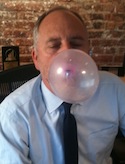March 19, 2014
Could We Have Kept A-Rod Off Drugs? Maybe Not, But We Can Certainly Keep the Next Generation of Baseball Stars Clean
Zocalopublicsquare.org Forum
For decades, major league baseball players have been doing drugs of various sorts to improve their performance: amphetamines that got players amped up for games and through the long season in the 1970s and 1980s, anabolic steroids that bulked up home-run sluggers to set new records in the 1990s and early 2000s, and today’s performance-enhancing drugs (PEDs)—which come in cream, pill, and lozenge form, and promise to keep athletes a step ahead of the competition (and the drug testers). The drugs change, but widespread drug use seems to be constant. In advance of the Zócalo/Arizona State University event “Have Drugs Changed Baseball Forever?”, we asked baseball watchers: Besides stricter regulation and increased testing, what changes—cultural, economic, or political—might reduce the use of PEDs in baseball?DONALD M. HOOTON
Deal with PEDs and kids

The use of appearance- and performance-enhancing drugs (APEDs) is a widespread problem, and so limiting our view to just baseball means missing an opportunity for an intelligent dialogue.
Over the past 20 years, estimates of rates of steroid use among American children and teenagers ranged from 2.2 to 6.1 percent. Most recently, a 2012 University of Minnesota study found that 5.9 percent of middle- and high-school-aged boys admitted to using steroids—and that 4.6 percent of girls in that age group have used them. That’s over 1.5 million kids in all.
This is the backdrop against which the question about baseball is asked. And yet our adult population remains virtually oblivious to the fact that this epidemic—not technically the right word but the best one I can find—even exists. Only 17 percent of American adults see steroid usage as a “big problem” among high school athletes while two-thirds of Americans agree that it is a big problem in professional sports.
Frankly, I’m not surprised that adults are unaware. Like the elite athletes they emulate, our kids keep this behavior secret. And media coverage of pros who test positive for drugs is much more prominent than reports on how seriously harmful these drugs are to children’s health and well-being.
Think about this: If every single Major League Baseball and NFL player were using anabolic steroids, they wouldn’t fill a typical high school football stadium. But we already have enough children using these drugs to fill nearly every major league ballpark in the country.
We have to begin dealing with the APEDs problem in baseball by dealing with the problem in our middle and high schools. Kids, teachers, parents, coaches, and other adults who work with children need to educate kids about the danger of steroids and be trained to encourage kids to achieve their objectives by eating right, exercising, and playing fair.
If we wait to deal with the problem at the professional sports level, we’ve waited way too long!
Donald M. Hooton is president of the Taylor Hooton Foundation, a nonprofit that is widely recognized as the national leader on the subject of appearance- and performance-enhancing drug use by America’s youth. He formed this foundation after the loss of his 17-year-old son, Taylor, who used anabolic steroids in the months leading up to his death.
BILL GERRITY
Fans who care

Angry fans! Or, happy fans! Right now, fans are ambivalent on the topic. And without public consensus on PEDs, little will change. As reactions to incidents with Ryan Braun (who tested positive and then lied before admitting to drug use) and the parade of dissembling players before Congress several years ago show, fans react angrily when players lie to them. But there is less anger from those same fans about the underlying behavior: the use of PEDs.
I think there is a lack of consensus about the basic facts. For instance, is the use of certain drugs “wrong” because it is medically dangerous, or because it provides “unfair” advantages to its users? If drug use is dangerous medically, where is the evidence? Are these drugs dangerous in moderation? And does the public care about moderate levels of danger in sports?
Clearly it is cheating to violate rules that are established by the MLB and the players union. But fans don’t agree on whether the use of PEDs, in and of itself, is cheating.
The recent passing of Dr. Frank Jobe, who pioneered reconstructive “Tommy John surgery,” reminds us that the marvel of medical technology can even replace body parts. Is this unfair? Tour de France cyclists are disqualified for using cortisone, yet it is administered to baseball players routinely. This drug is used illegally to “enhance” performance in cycling but is legal to use in baseball to “enable” performance by reducing inflammation. There might be a clear medical basis for such policy differences, but fans are not doctors.
All this is, at a minimum, confusing to fans. And, in the midst of such ambiguity, it’s difficult to establish and enforce policies. If fans do not think it is fundamentally “wrong” for players to use PEDs, it will be very difficult for players to think what they are doing is wrong.
Bill Gerrity played baseball in college and for many years afterward, and is now an earnest fan. He is the managing partner of Gerrity Group, an owner and operator of shopping centers in the western United States, in partnerships with financial institutions. He is also a member of the board of directors of Zócalo Public Square and the New America Foundation.
TOM FEUER
Use technology to make the players hurt

The only real deterrents to keep athletes from using PEDs are fear, humiliation, and economic sanctions. A solution to baseball’s problem would then on the surface be easy and straightforward: mete out extremely severe penalties such as a two-year suspension for first-time offenders and a lifetime ban for any subsequent positive test. Two years in almost any sport is an eternity and could effectively end a career anyway.
That said, there are big obstacles to this line of thinking. Any changes that are made to Major League Baseball’s drug testing system have to be collectively bargained between the league and the players union. As such, change is likely to be incremental at best, at least in our lifetimes. The players will not unilaterally agree to any alterations in the collective bargaining agreement unless they get something tangible in return. Moreover, the public is much more forgiving of dopers in professional sports than they are in the Olympic arena.
And, ever since the PED scourge started in track and field in the 1950s, the cheaters have been way ahead of the testers—making positive tests not a deterrent so much as a workaround. But with some resolve from the commissioner’s office to infuse capital—for instance, taking just a small percentage from Fox and ESPN’s new television deals to fund a lab that can detect the latest and greatest synthetic substances—this age-old problem could be surmounted.
At the end of the day, if technology is considered an economic change, then the most realistic way to reduce the influx of drugs in baseball will be instituting testing protocols that are beyond the pale.
Tom Feuer is a former sports television executive with 25+ years in the “business” who just started as a professor of practice and director of the Arizona State University Cronkite School’s new Santa Monica Sports Bureau.
DANIEL RASCHER
Take away individual players’ incentives

Research shows that PED use positively impacts attendance at Major League Baseball games because of the higher offensive output. But if we assume that fans do not want a continuation of or enhanced PED use in baseball, a number of strategies could be taken that involve changing the economic incentives the players face.
If no players used PEDs, the incentive to use the drugs would be lessened; players wouldn’t be attempting to keep up with the Joneses. If many players are using PEDs, the individual incentive rises: Players feel they need drugs in order to perform well or even stay in the majors. If all players could credibly agree to disavow PEDs, they would be better off as a group. The problem is that a single player might want to “cheat” on the agreement and use PEDs in order to gain an advantage. If other players believe that to be the case, then they, too, will start using PEDs. All of a sudden, players are using PEDs even though as a group they didn’t want to.
Because detection is difficult and the punishments are weak, players continue to use PEDs as they calculate the tradeoffs of detection, punishment, and negative health issues with enhanced on-the-field productivity if their drug use goes undetected.
But what would happen if we changed the incentives in the players’ calculations? The players union (not the owners) could take it upon themselves to establish a no-PED policy, volunteer for frequent and full testing, and then make the punishment for positive tests stronger. (A first offense would mean missing an entire season and a second offense would put a player out of baseball forever.)
It is in the interest of the owners and all the players, collectively, not to have PED use in baseball. The issue is that individual players have an incentive to break from the agreement—and knowing that, other players break from it, too.
Daniel Rascher is an economist in the sport management program at the University of San Francisco.
A.J. STONEHOUSE
Make it all about the money

The average annual salary of a major league baseball player is over $3.2 million. It would take the average American 75 years to make $3.2 million.
What does this statistic have to do with PEDs in baseball? Everything.
We must recognize that cheating in baseball will never be eliminated when half a million dollars is guaranteed to anyone who simply makes a major league roster, not to mention the hundreds of millions that can be made by becoming an MLB superstar.
To create real, lasting change, the MLB needs to make bold, drastic changes the next time the collective bargaining agreement—the contract between the players union and owners—is up for renegotiation. The new agreement should impact players financially if they are caught using PEDs by adding clauses that void contracts, deduct a large percentage of player salaries through a series of tiered fines, and cancel all future guaranteed money. Since the ultimate goal of PED use is to improve statistics in order to land a huge contract, the best way to encourage players to stop cheating is to attack their money.
The current system of escalating suspensions—beginning at 15 days and with a small fine—does not solve the PED problem because players still achieve their original goal of making money. Nothing is at risk other than a few game checks and some temporary embarrassment. Under the current system Ryan Braun’s 65-game suspension will cost him $3.25 million, but it will not have a lasting financial impact because he will make $10 million in 2014 and $12 million in 2015. And though a positive drug test might damage a player’s long-term legacy, most players would gladly trade their legacy for enough cash to guarantee a comfortable future for their families.
A.J. Stonehouse is a branding consultant and the founder of Five Point Stance in Washington, D.C. He is fascinated by the intersection of economics and professional athletics, and believes that the best business analogies exist in the world of sports.
http://www.zocalopublicsquare.org/2014/03/19/could-we-have-kept-a-rod-off-drugs/ideas/up-for-discussion/
